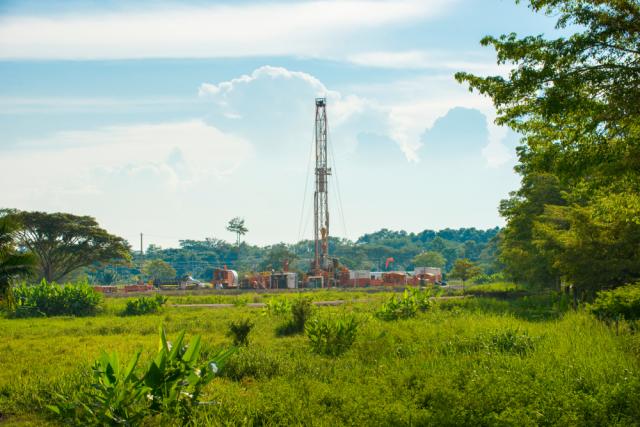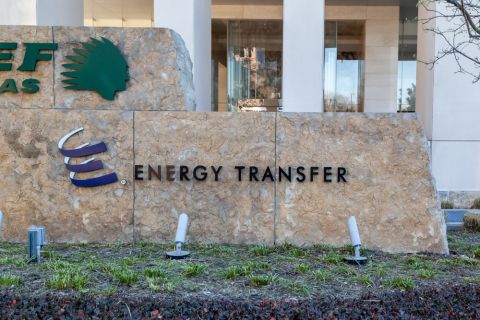
Colombia awarded 11 blocks during its latest bid round. (Source: Shutterstock.com)
Colombia, the site of several oil and gas discoveries in recent months, has added to its winning streak with Canacol Energy Ltd. reporting another gas discovery.
The company said July 15 that the Ocarina 1 well, which tested an accumulation about 1 km southeast of its recent Acordeon 1 discovery, hit 530 ft of gas pay in the same Cienaga de Oro (CDO) sandstone reservoir as Acordeon.
The latest find confirmed accumulation in the CDO, the Calgary, Alberta-based company said in a statement.
“An interval between 6,444 and 6,457 ft TVD [true vertical depth] was production tested at multiple rates for a 32 hour-period,” Canacol said. “This interval flowed at a final rate of 30.4 [million standard cubic feet per day] at a flowing tubing head pressure of 913 psi and a choke of 82/64 inch. The average flow rate for the entire period was 16 MMscf/d.”
Plans are for the well, which was drilled by the Pioneer 53 drilling rig, to be tied to the Jobo production facility and brought online by the end of July.
The news comes a few weeks after the company said its Acordeon 1 well hit gas, testing at a rate of 33 MMscf/d.
It also comes following a quarter that saw Colombia lead a list of key regions in terms of oil and gas discoveries.
Energy consultancy GlobalData earlier this month reported seven onshore discoveries—five conventional oil in the Putumayo and Llanos Orientale basins and two conventional gas in the Lower Magdalena Valley Basin—were made in Colombia during second-quarter 2019.
That was more than double that of India, Russia and Pakistan. Each of these countries had three discoveries in the second quarter, GlobalData said.
“Gran Tierra Energy is the operator with the highest number of discoveries in Colombia in Q2 2019 with three, followed by Canacol Energy Ltd., Arrow Exploration Corp., Ecopetrol and Parex Resources Inc. with one discovery each in the country,” Arpan Roychowdhury, an oil and gas analyst for GlobalData, said in a news release.
Colombia has a reserves potential equivalent to about 47 billion barrels of oil, according to its state-run oil company Ecopetrol. The country is one of South America’s biggest oil producers, following Brazil and Venezuela.
In an effort to attract more investors, Colombia also recently revamped its royalties and tax contract model. In June, it allocated 10 of 11 blocks offered to companies participating in a bid round. The unassigned block, VIM22, attracted two companies—Geopark Ltd. and Frontera Energy. But the government gave Geopark time to make a counteroffer.
The first batch of contracts related to the auction were signed earlier this month, restarting activity that had stalled after more than five years of no offers or rounds for new acreage as drilling plans already underway continued.
Luis Miguel Morelli, president of the Colombia’s National Hydrocarbons Agency, saw the latest discovery as a positive for the country’s gas outlook.
“This is good news for the incorporation of gas reserves in the country, which in 2018, for the first time, fell to a useful half-life of less than 10 years,” Morelli said in a statement. “We hope that with the incentives granted by the administration of President Duque to reactivate the oil sector in Colombia, and the incorporation of new blocks with a vocation for gas to the Permanent Process of Area Allocation, the exploratory activity will be intensified and new findings, such as the one that Canacol reports, will partially remove the shortage of this energetic.”
Colombia produced about 12.9 billion cubic meters (Bcm) of gas in 2018, compared to 8.7 Bcm ten years earlier, according to the latest BP Statistical Review of World Energy.
The next stop for Pioneer 53 is the Pandereta Field on the VIM 5 Block, where Canacol said the Pandereta 5 appraisal well will be drilled to test the field’s western extent. If successful, the company said the field’s proved plus probable reserves would rise from the current 100 billion cubic feet. The company plans to spud the well this month and spend about five weeks on drilling, completion and testing.
Canacol also reported that its Nelson 7 development well was production tested and flowed at an average flow rate of 15 MMscf/d.
Velda Addison can be reached at vaddison@hartenergy.com.
Recommended Reading
Ozark Gas Transmission’s Pipeline Supply Access Project in Service
2024-04-18 - Black Bear Transmission’s subsidiary Ozark Gas Transmission placed its supply access project in service on April 8, providing increased gas supply reliability for Ozark shippers.
Kinder Morgan Sees Need for Another Permian NatGas Pipeline
2024-04-18 - Negative prices, tight capacity and upcoming demand are driving natural gas leaders at Kinder Morgan to think about more takeaway capacity.
Scathing Court Ruling Hits Energy Transfer’s Louisiana Legal Disputes
2024-04-17 - A recent Energy Transfer filing with FERC may signal a change in strategy, an analyst says.
Balticconnector Gas Pipeline Will be in Commercial Use Again April 22, Gasgrid Says
2024-04-17 - The Balticconnector subsea gas link between Estonia and Finland was damaged in October along with three telecoms cables.
Targa Resources Ups Quarterly Dividend by 50% YoY
2024-04-12 - Targa Resource’s board of directors increased the first-quarter 2024 dividend by 50% compared to the same quarter a year ago.





